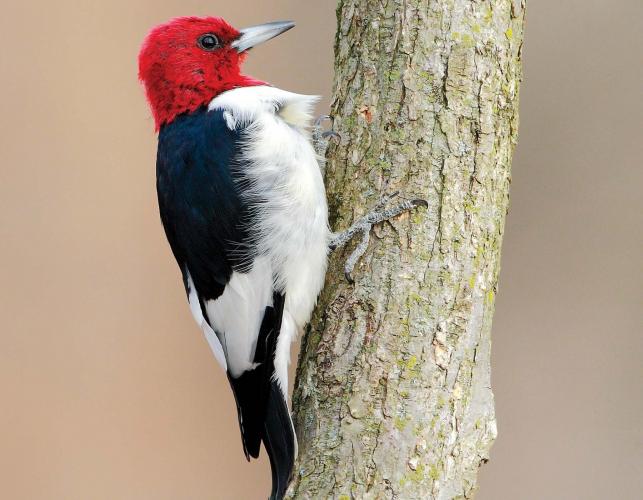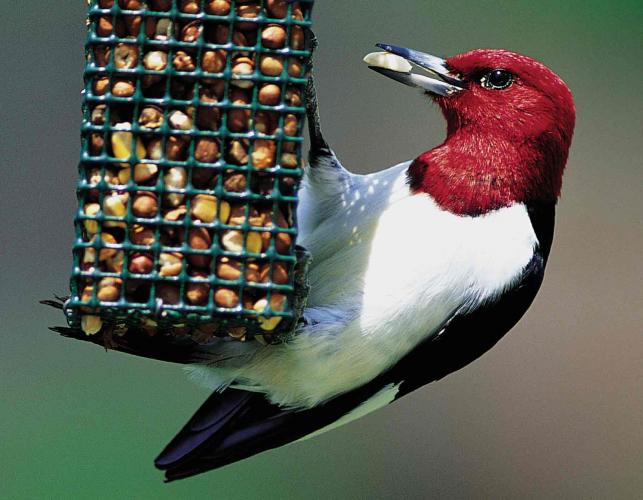
Woodpeckers are powerful birds that climb tree trunks and use their beaks like jackhammers. These master builders chisel out nests in tree cavities. As such, their eggs are white as there is no need for camouflage in their luxe tree homes. They can drum 20 times per second with most pecking between 8,000-12,000 times per day. Drumming is also used to communicate along with feeding and home building.
Have you ever wondered how woodpeckers avoid skull-splitting headaches from all that pounding? It’s because of an extra thick skull and chisel-like beak. Both are cushioned by strong muscles that act as shock absorbers. Woodpeckers also use their feet and tails for better stability when perched on trees. Their specialized zygodactyl feet have two toes pointing forward and two pointing backward to grip vertical spaces. Their stiff tails will also act like a third leg.

Woodpeckers also have what's known as a third eyelid. This nictitating membrane is translucent and closes just before a woodpecker hits wood with its beak. It both protects and cleanses the eye as it moves over it.
Woodpecker nostrils have bristles in them to protect from wood chips and sawdust. The Downey woodpecker, our smallest, has the largest bristles. The long tongues of woodpeckers help to sweep out insects from inside trees and logs. The Red-bellied woodpecker's tongue can reach two inches past its beak. When retracted, their tongues will wrap around their skulls.
Woodpeckers are important members of the forest community. They consume lots of wood-boring insects. Besides insects, woodpeckers eat nuts, fruit, and seeds. Their abandoned tree cavities are prime real estate for bluebirds, chickadees, owls, squirrels and other wildlife unable to dig out their own homes.
All woodpeckers have a similar flight pattern consisting of three wing beats and a glide, and then repeated. Many species of woodpeckers found in the Midwest will visit bird feeders supplied with suet or sunflower seed.
A field guide and a pair of binoculars will help you identify which of these birds live in your neck of the woods.
Helping Woodpeckers
Woodpeckers face threats from loss of habitat and urbanization to insecticide use that limits their food supply. Below are some tips to help them in both urban and rural areas.
- Leave snags -- standing or dead or dying trees-- to provide places to nest and feed.
- Let large logs be for habitat and insects
- Landscape your yard or property with native trees, shrub and vines --especially nut-and-fruit bearing species.
- Consider suet feeders or black oil sunflower seeds. Note suet becomes rancid and harmful to birds in temperatures above 70 degrees.
Discover more about woodpeckers in our Field Guide.














Recent Posts
























